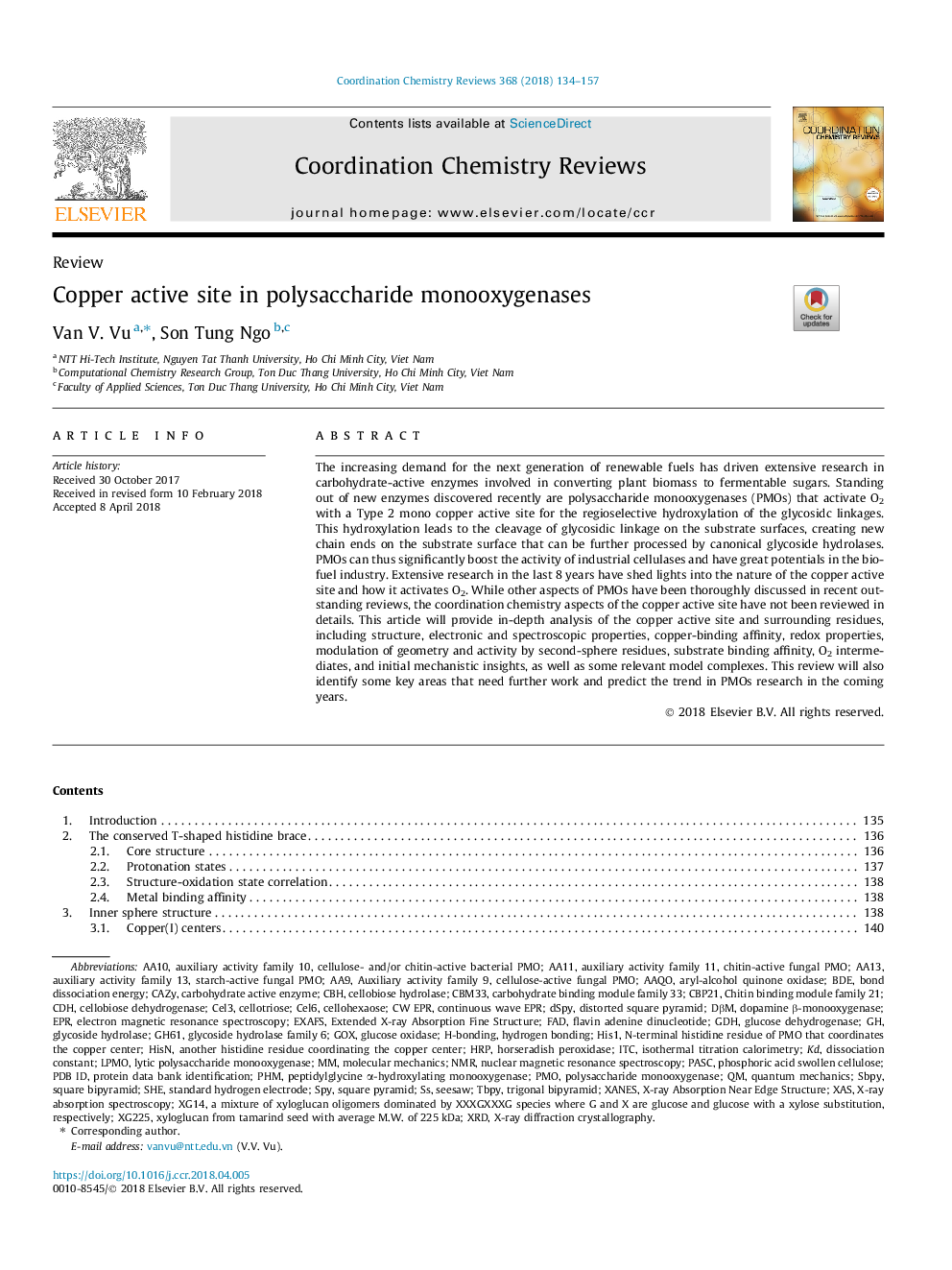| Article ID | Journal | Published Year | Pages | File Type |
|---|---|---|---|---|
| 7747489 | Coordination Chemistry Reviews | 2018 | 24 Pages |
Abstract
The increasing demand for the next generation of renewable fuels has driven extensive research in carbohydrate-active enzymes involved in converting plant biomass to fermentable sugars. Standing out of new enzymes discovered recently are polysaccharide monooxygenases (PMOs) that activate O2 with a Type 2 mono copper active site for the regioselective hydroxylation of the glycosidc linkages. This hydroxylation leads to the cleavage of glycosidic linkage on the substrate surfaces, creating new chain ends on the substrate surface that can be further processed by canonical glycoside hydrolases. PMOs can thus significantly boost the activity of industrial cellulases and have great potentials in the biofuel industry. Extensive research in the last 8â¯years have shed lights into the nature of the copper active site and how it activates O2. While other aspects of PMOs have been thoroughly discussed in recent outstanding reviews, the coordination chemistry aspects of the copper active site have not been reviewed in details. This article will provide in-depth analysis of the copper active site and surrounding residues, including structure, electronic and spectroscopic properties, copper-binding affinity, redox properties, modulation of geometry and activity by second-sphere residues, substrate binding affinity, O2 intermediates, and initial mechanistic insights, as well as some relevant model complexes. This review will also identify some key areas that need further work and predict the trend in PMOs research in the coming years.
Keywords
Trigonal bipyramidCBHGDHHRPITCCAZyLPMOLytic polysaccharide monooxygenaseSeesawflavin adenine dinucleotidePMOPASCPDB idBDEXANESGH61CW EPREXAFSPHMXASCDHGlucose oxidasestandard hydrogen electrodebond dissociation energySHEFADGoxNMREPRSpyX-ray absorption near edge structureDissociation constantdopamine β-monooxygenaseextended X-ray absorption fine structurecellobiose dehydrogenaseCellotrioseX-ray absorption spectroscopyNuclear magnetic resonance spectroscopyMolecular mechanicsQuantum mechanicsSquare pyramidXRDHorseradish peroxidaseH-bondingHydrogen bondingIsothermal titration calorimetryGlucose dehydrogenaseglycoside hydrolase
Related Topics
Physical Sciences and Engineering
Chemistry
Inorganic Chemistry
Authors
Van V. Vu, Son Tung Ngo,
